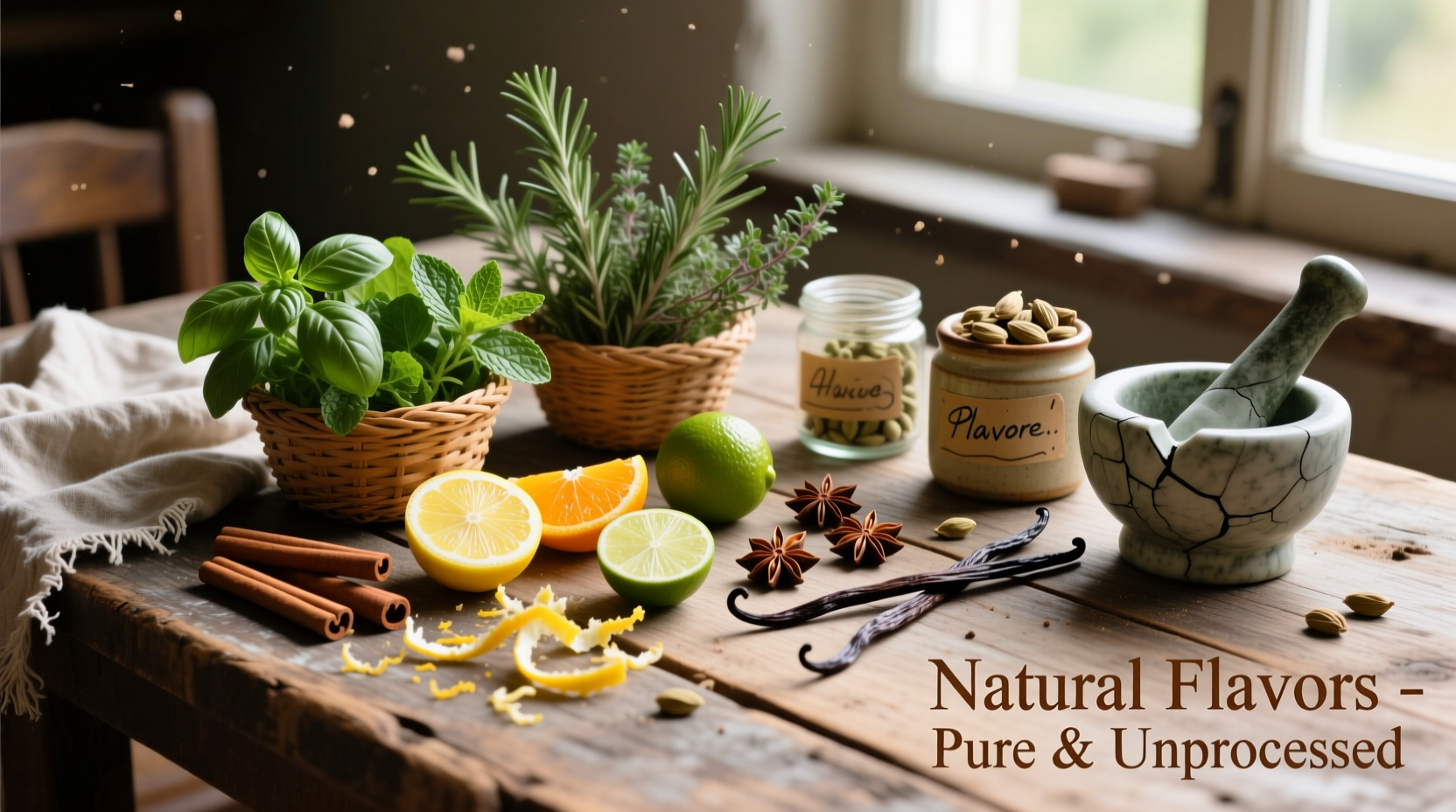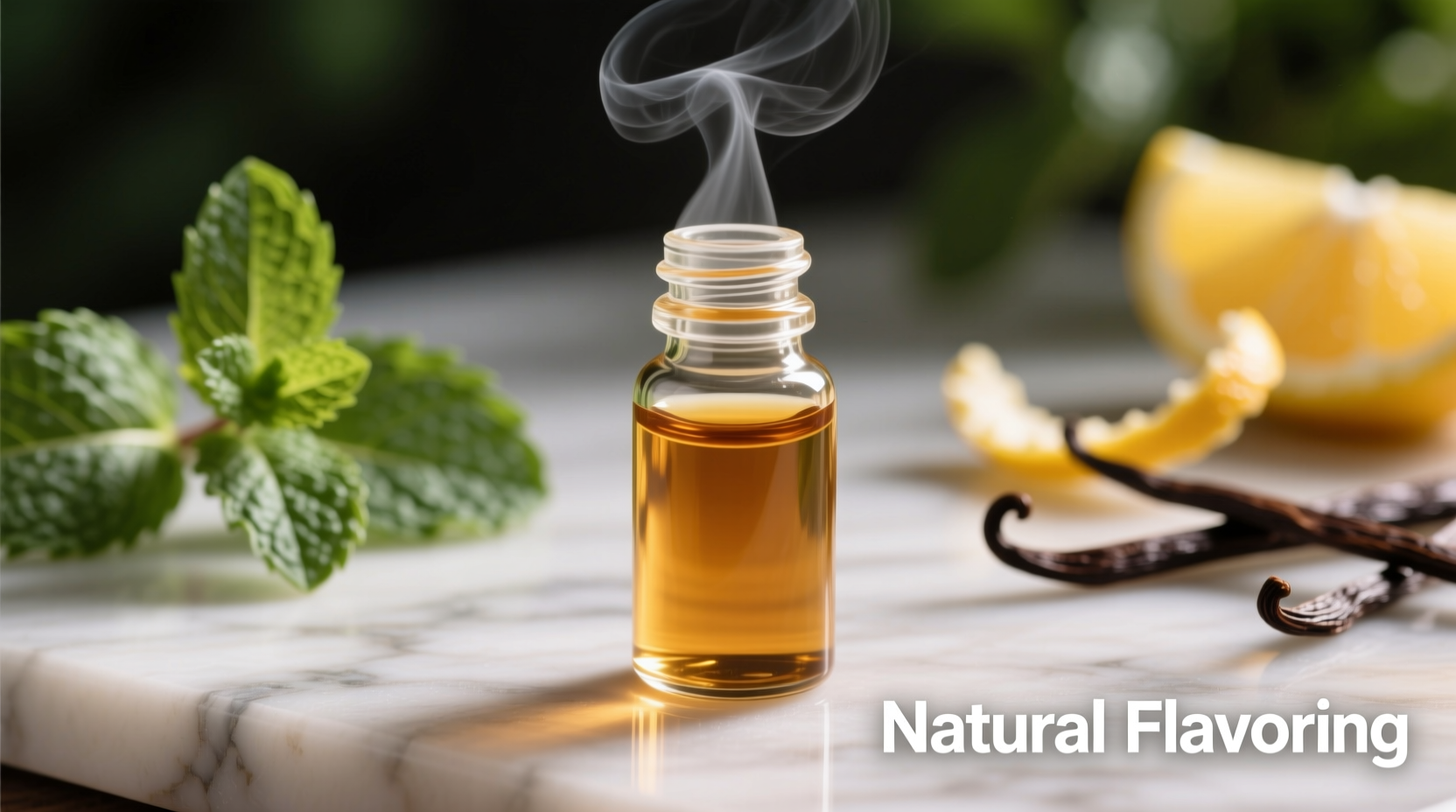Natural flavoring refers to substances derived from plant or animal sources used to enhance food taste. According to the U.S. Food and Drug Administration (FDA), natural flavors must originate from natural sources like fruits, vegetables, herbs, spices, meat, or dairy through physical, enzymatic, or microbiological processes. Unlike artificial flavors created in laboratories, natural flavors maintain their origin in real food materials, though they undergo significant processing to extract and concentrate flavor compounds.
Ever wondered what those "natural flavors" listed on your food label actually mean? You're not alone. As consumers become more ingredient-conscious, understanding what natural flavoring really is has become essential for making informed choices. This guide cuts through the confusion with science-backed facts about natural flavoring—from how it's made to what you should know before buying products containing it.
Defining Natural Flavoring: Regulatory Standards
The U.S. Food and Drug Administration (FDA) provides the official definition under 21 CFR §101.22: natural flavors are substances extracted, distilled, or derived from plant or animal matter solely for flavoring purposes. These can come from sources like fruits, vegetables, herbs, spices, meat, seafood, dairy, or fermentation products. Crucially, the FDA requires that natural flavors contain no synthetic solvents, carriers, or preservatives beyond what's necessary for production.
While the European Food Safety Authority (EFSA) uses similar criteria, their regulations specify that natural flavoring substances must be obtained through traditional food preparation methods. This distinction matters because it affects which processing techniques qualify as "natural" across different markets.
Natural vs. Artificial: Understanding the Key Differences
Many consumers assume "natural" means minimally processed, but the reality is more complex. Both natural and artificial flavors undergo significant processing—the difference lies in their starting materials. To clarify this often-misunderstood distinction, consider these key points:
| Characteristic | Natural Flavoring | Artificial Flavoring |
|---|---|---|
| Source Material | Plant or animal matter (fruits, spices, meat, etc.) | Synthetic chemicals not found in nature |
| Processing Level | Extensive (extraction, distillation, fermentation) | Chemical synthesis in laboratory |
| Molecular Structure | Identical to compounds found in nature | Different molecular structures than natural counterparts |
| Regulatory Threshold | Must originate from natural sources | No natural source requirement |
This comparison reveals why natural flavors aren't necessarily "healthier"—they can contain the same chemical compounds as artificial versions, just derived differently. The FDA confirms that both types undergo rigorous safety testing before approval.
How Natural Flavors Are Created: From Source to Shelf
Creating natural flavoring involves sophisticated food science techniques that transform raw materials into concentrated flavor compounds. The process typically follows these stages:
- Source Selection: Manufacturers choose raw materials like vanilla beans, citrus peels, or herbs based on desired flavor profile
- Extraction: Using methods like cold pressing, distillation, or solvent extraction to isolate flavor compounds
- Refinement: Filtering and purifying the extract to remove unwanted elements
- Concentration: Increasing flavor intensity through evaporation or other techniques
- Standardization: Blending extracts to ensure consistent flavor profile across batches
For example, natural strawberry flavor might come from actual strawberries, but more commonly uses a combination of other fruits and botanicals that contain similar flavor compounds. The FDA permits this practice as long as all components originate from natural sources.

Common Natural Flavor Sources You Might Not Expect
When you see "natural flavors" on a label, the specific source remains undisclosed—a point of frustration for many consumers. Food manufacturers aren't required to specify exact ingredients, leading to some surprising sources:
- Citrus flavors often come from orange or lemon peels rather than the fruit pulp
- "Natural smoke flavor" typically derives from burning wood chips and capturing the smoke compounds
- Vanilla flavor sometimes uses castoreum (from beaver glands) though this is rare in modern production
- Fruit flavors frequently combine multiple fruit sources to achieve desired taste profiles
The FDA maintains that these sources are safe for consumption, but the lack of transparency concerns many health-conscious shoppers. A 2023 survey by the International Food Information Council found that 68% of consumers want more specific labeling of natural flavor sources.
What Consumers Should Know: Practical Guidance
If you're trying to make informed choices about natural flavoring in your food, consider these evidence-based recommendations:
- Check for additional descriptors: Labels saying "natural vanilla flavor" or "natural citrus flavor" provide more specific information than generic "natural flavors"
- Understand processing limitations: "Natural" doesn't mean unprocessed—most natural flavors undergo significant transformation
- Consider your priorities: If avoiding specific allergens is your concern, contact manufacturers directly as labeling may not reveal all sources
- Balance perspective: The American Chemical Society notes that many natural flavors contain the same chemical compounds as artificial versions, just derived differently
Food scientists at Cornell University emphasize that natural flavors serve important functional purposes beyond taste—they can enhance mouthfeel, balance sweetness, and improve overall eating experience. Completely avoiding them would significantly alter many familiar food products.
Addressing Common Misconceptions
Several myths about natural flavoring persist despite scientific evidence. Let's clarify the most prevalent misunderstandings:
- Myth: Natural flavors are always healthier than artificial ones
- Fact: Both undergo safety evaluations; nutritional profiles depend more on the final product than the flavoring type
- Myth: "Natural" means the flavor comes directly from the named ingredient (e.g., "strawberry flavor" contains strawberries)
- Fact: Natural strawberry flavor can legally come from other fruits containing similar compounds
- Myth: Natural flavors are minimally processed
- Fact: Most undergo extensive processing to isolate and concentrate flavor compounds
The Institute of Food Technologists confirms that both natural and artificial flavors are safe at consumption levels found in food products. Their primary difference lies in consumer perception rather than safety or nutritional value.
Looking Ahead: Transparency Trends in Flavor Labeling
Consumer demand for transparency is driving changes in how food companies approach flavor labeling. Several industry shifts are worth noting:
- Some manufacturers now voluntarily specify flavor sources (e.g., "natural vanilla flavor from Madagascar vanilla beans")
- Third-party certification programs like NSF Certified for Sport now verify natural flavor claims for supplement products
- Advancements in analytical chemistry allow for more precise identification of flavor components
- Several states have proposed legislation requiring more specific natural flavor disclosure
While full ingredient disclosure for natural flavors remains unlikely due to proprietary concerns, the trend toward greater transparency continues to grow. Food manufacturers increasingly recognize that clear communication builds consumer trust in an era of heightened ingredient awareness.
Is natural flavoring gluten-free?
Most natural flavors are gluten-free as they're derived from non-grain sources. However, flavors derived from wheat or barley would contain gluten. Manufacturers aren't required to disclose this, so individuals with celiac disease should contact companies directly or choose products with certified gluten-free labeling.
Does natural flavoring contain MSG?
Natural flavoring itself doesn't necessarily contain MSG, but some natural flavor sources like hydrolyzed vegetable protein can contain free glutamic acid. The FDA requires MSG to be listed separately if added directly, but it may be present in natural flavors without specific labeling. Those sensitive to MSG should look for products explicitly labeled "no MSG" or contact manufacturers.
Are natural flavors vegan?
Not necessarily. Natural flavors can come from animal sources like dairy, meat, or insects (e.g., carmine from cochineal insects). Vegan certification provides the only reliable assurance, as "natural flavors" on a label doesn't indicate whether animal products were used in production.
How much natural flavoring is typically used in products?
Natural flavors usually constitute less than 1% of a product's total ingredients. The exact amount varies by product type—beverages might contain 0.1-0.5% while baked goods could use up to 2%. Despite small quantities, these flavors significantly impact overall taste perception due to their concentrated nature.











 浙公网安备
33010002000092号
浙公网安备
33010002000092号 浙B2-20120091-4
浙B2-20120091-4